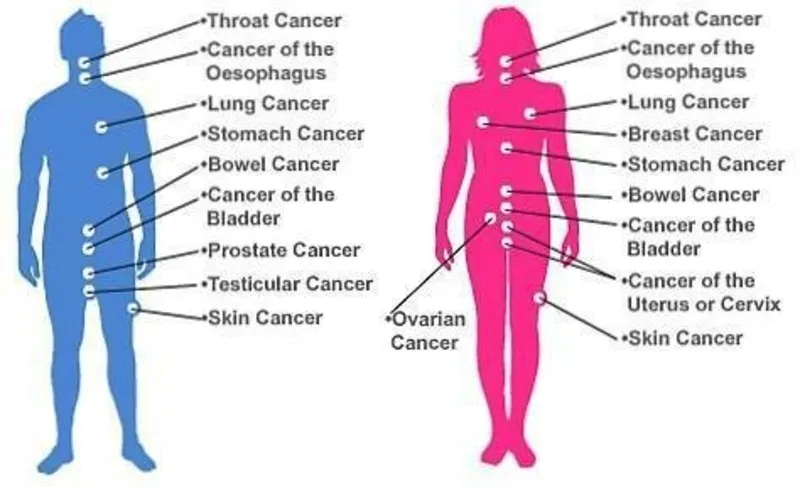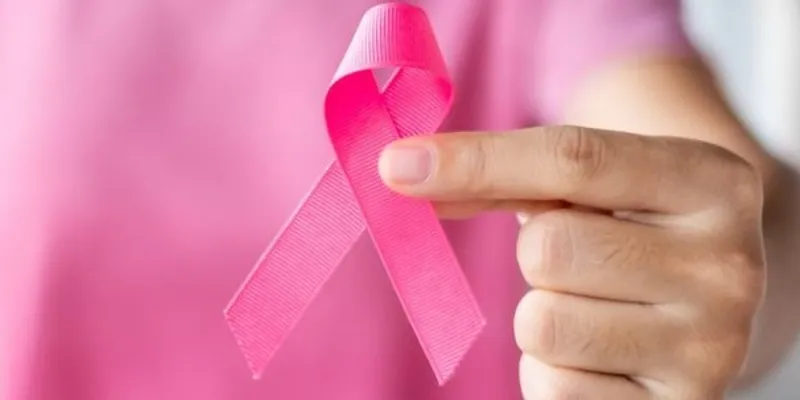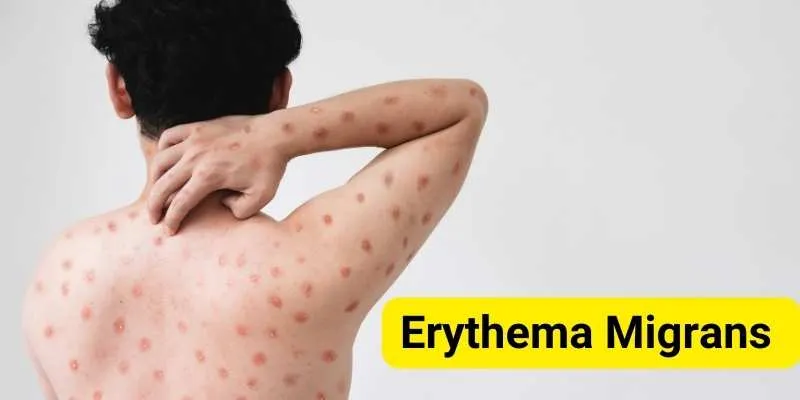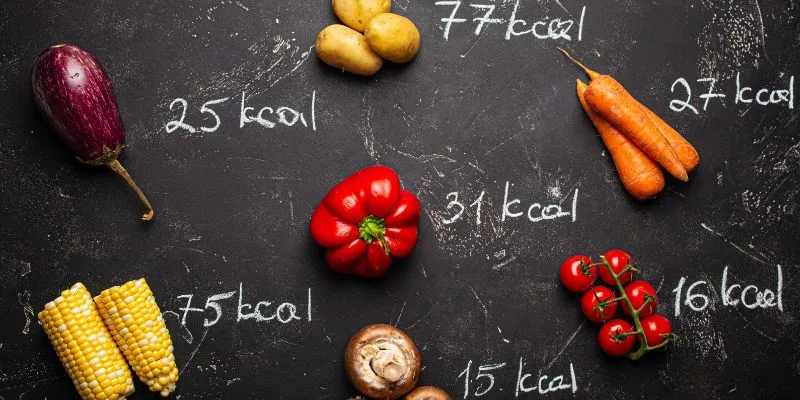Types and Risk Factors of Cancer
Cancer is a complex group of diseases characterized by uncontrolled cell growth and the potential to invade or spread to other parts of the body. The term “cancer” encompasses a wide range of conditions, each with unique characteristics and implications. This article provides an overview of cancer types, the main risk factors associated with these diseases, and preventive strategies. Understanding these aspects is crucial for effectively managing and reducing cancer risk.
Common Types of Cancer
Cancer can develop in nearly any part of the body, and classification is based on the origin tissue or organ. Common types include breast cancer, which originates in breast cells; lung cancer, which begins in the lungs; and colorectal cancer, affecting the colon or rectum. Other types include prostate cancer, which starts in the prostate gland, and skin cancers, often caused by excessive sun exposure. Personalized medical care is essential for effective management, as each cancer type has distinct features, progression patterns, and treatment options.

Additionally, less common cancers like pancreatic and ovarian cancer are notable for their subtle symptoms and late detection. Some cancers are classified based on the originating cells, such as leukemia, which starts in blood-forming tissues like bone marrow. Identifying the exact type of cancer aids in selecting appropriate treatment options and improving outcomes. Specialized cancer centers provide comprehensive care tailored to the specific cancer type and its stage.
- Emerging Research : Ongoing research continually identifies new cancer types, potentially leading to novel treatment options.
- Rare Cancers : Less common cancers may require referral to specialized centers for optimal treatment and management.
Genetic and Environmental Risk Factors
Cancer risk is influenced by genetic predispositions and environmental factors. Genetics plays a crucial role, with inherited mutations potentially increasing the likelihood of cancers such as breast, ovarian, or colorectal cancer. Environmental factors also elevate cancer risk, including exposure to carcinogens like tobacco smoke and industrial chemicals. Lifestyle choices, such as poor diet, physical inactivity, and excessive alcohol consumption, further contribute to vulnerability to various cancers.
Environmental exposures extend beyond chemicals to include radiation, such as UV rays from the sun and ionizing radiation from medical procedures or occupational hazards. The interplay between genetic predispositions and environmental factors is complex, influencing individual cancer risk. For instance, a person genetically predisposed to lung cancer may face increased risk if also exposed to smoking or secondhand smoke.
- Genetic Testing : Individuals with a family history of cancer may benefit from genetic testing to assess their risk.
- Environmental Controls : Reducing exposure to known carcinogens can help mitigate cancer risk.
Lifestyle Factors and Cancer Risk
Lifestyle choices significantly impact cancer risk. Smoking is a major cause of lung cancer and is linked to other cancers, including throat and bladder. Obesity is associated with various cancers, such as breast, colorectal, and pancreatic. Additionally, physical inactivity, poor diet, and excessive alcohol consumption increase cancer risk. Adopting a healthy lifestyle with regular physical activity, a balanced diet rich in fruits and vegetables, and avoiding tobacco and excessive alcohol can help reduce cancer risk.
Beyond smoking and obesity, other lifestyle factors contribute to cancer development, including excessive sun exposure and high consumption of processed meats. Embracing healthier habits, like using sunscreen and opting for lean protein sources, further decreases cancer risk. Programs and resources focusing on lifestyle changes can assist individuals in making lasting health improvements.
- Exercise Recommendations : Regular physical activity is associated with a lower risk of several types of cancer.
- Sun Protection : Using sunscreen and wearing protective clothing can reduce the risk of skin cancer.
Preventive Measures and Early Detection
Effective cancer prevention involves lifestyle modifications, regular screenings, and vaccinations. Routine physical exams and screenings help detect cancer at early stages when treatment is more effective, such as mammograms for breast cancer or colonoscopies for colorectal cancer. Vaccines, like those for human papillomavirus (HPV) and hepatitis B, can prevent cancers linked to these viruses. Preventive actions, such as maintaining a healthy weight, regular exercise, and avoiding carcinogen exposure, significantly reduce cancer risk.
Moreover, certain medications and interventions may lower cancer risk. For high-risk individuals, chemoprevention can reduce the likelihood of developing certain cancers. Regular check-ups and screenings tailored to individual risk factors ensure timely intervention. Preventive care plays a crucial role in comprehensive cancer management.
- Chemoprevention : Medications can reduce cancer risk in high-risk individuals.
- Personalized Screenings : Tailoring screening schedules based on individual risk factors improves early detection.
The Role of Diet and Nutrition
A diet rich in fruits, vegetables, whole grains, and lean proteins is essential for cancer prevention and overall health. These foods provide essential nutrients and antioxidants that protect the body against cancer. Certain dietary patterns, like the Mediterranean diet, are associated with a reduced risk of some cancers, emphasizing healthy fats and high-fiber foods. Reducing intake of processed meats, high-fat foods, and excess sugar also helps lower cancer risk. A balanced diet supports the immune system and maintains a healthy weight, both crucial for cancer prevention.

Nutritional strategies may include dietary supplements, such as vitamin D and calcium, which could aid in cancer prevention. However, focusing on a well- rounded diet rather than relying solely on supplements is important. Consulting a healthcare provider or registered dietitian can help create a personalized nutrition plan for cancer prevention.
- Dietary Supplements : Certain supplements may support cancer prevention but should complement a balanced diet.
- Consult a Dietitian : Professional guidance can tailor dietary recommendations to individual health needs.
The Importance of Regular Screenings
Regular screenings are vital for cancer detection and management. Screening tests identify cancer before symptoms appear, increasing the chances of successful treatment. Common screening tests include mammograms for breast cancer, Pap smears for cervical cancer, and PSA tests for prostate issues. These tests are effective in detecting cancer early when it’s more treatable. Individuals at higher risk, such as those with a family history, should discuss appropriate screening schedules with healthcare providers to ensure timely monitoring and optimal outcomes.
Screening recommendations may vary based on factors like age, gender, and family history, making it essential to stay updated with the latest guidelines. For instance, someone with a significant family history of certain cancers may need to begin screenings earlier than the general population. Regular discussions with healthcare providers about screening needs and updates are crucial for effective cancer surveillance.
- Screening Guidelines : Follow age-specific and risk-based screening guidelines to ensure timely detection.
- Family History : Those with a family history of cancer should discuss earlier or more frequent screenings with their healthcare provider.
Conclusion
Understanding the various types of cancer, identifying associated risk factors, and implementing preventive strategies are vital for reducing cancer rates and improving outcomes. Regular medical check-ups, lifestyle modifications, and adherence to screening guidelines are key components of a comprehensive approach to cancer prevention and management.











